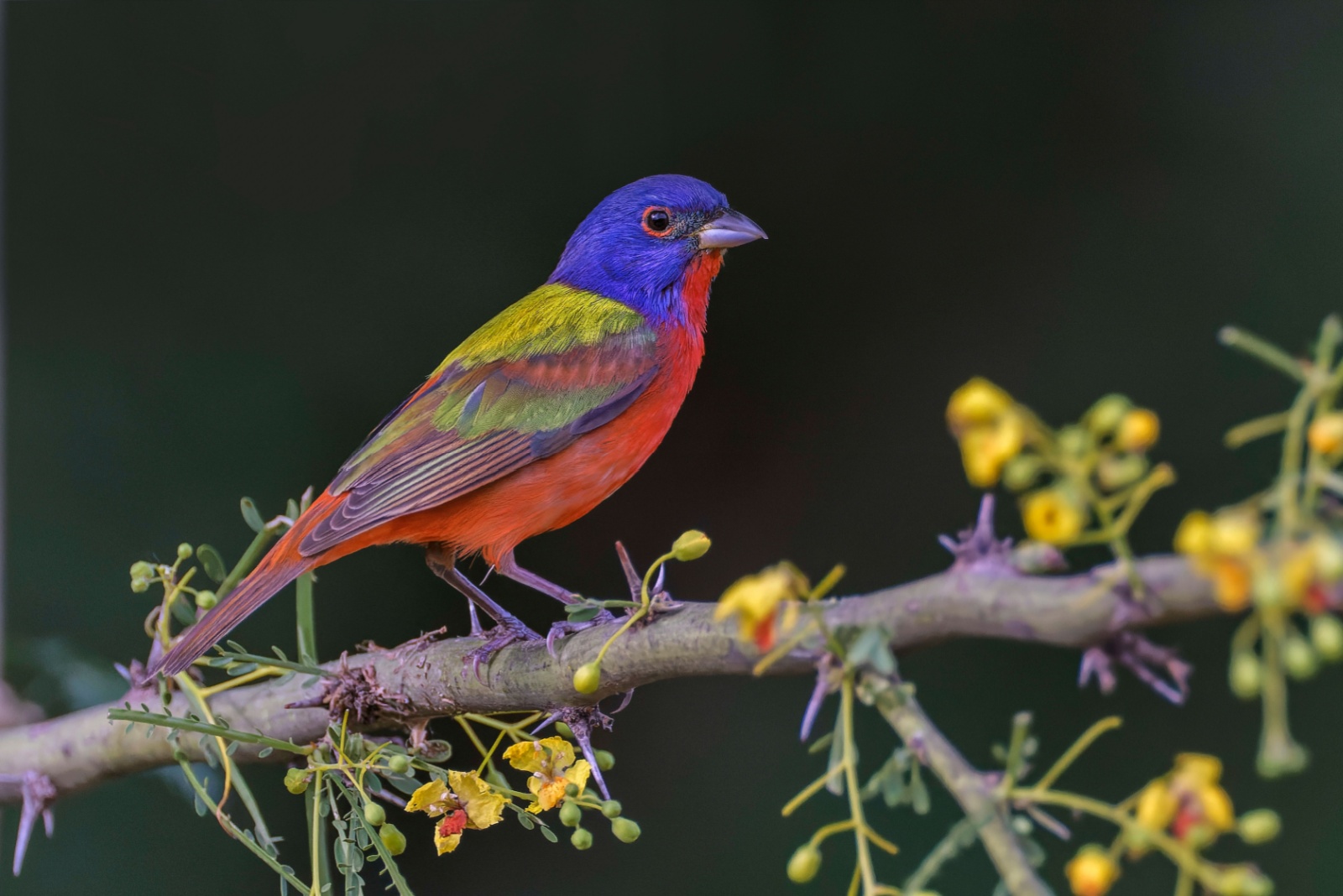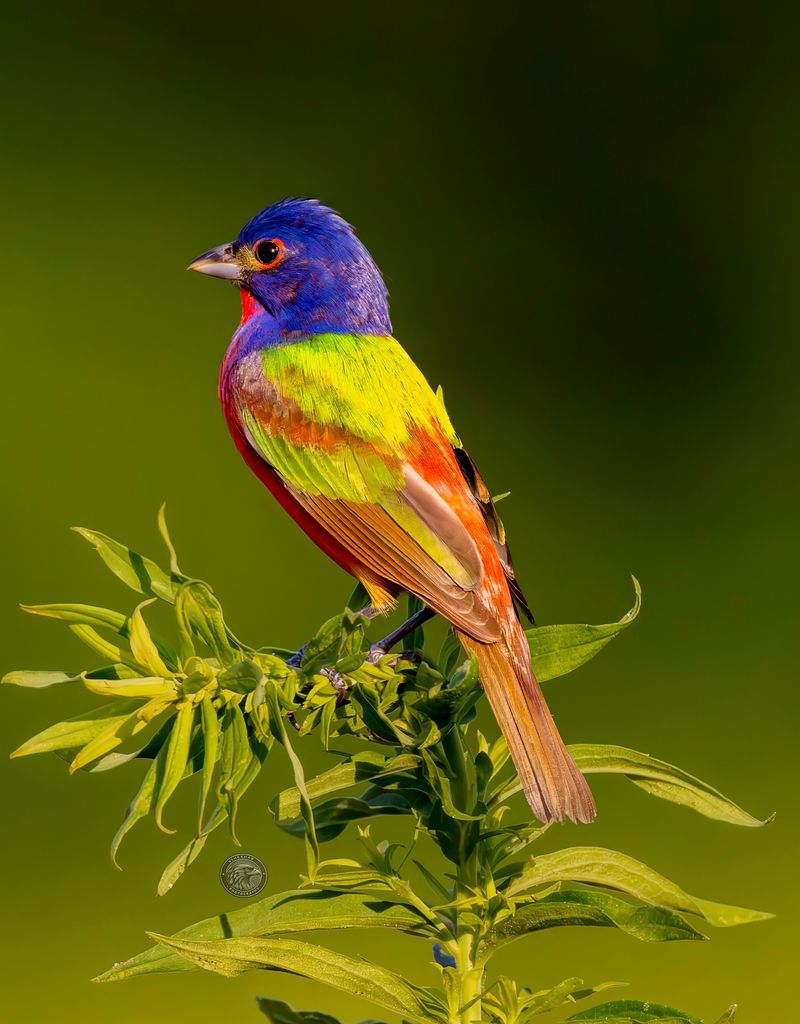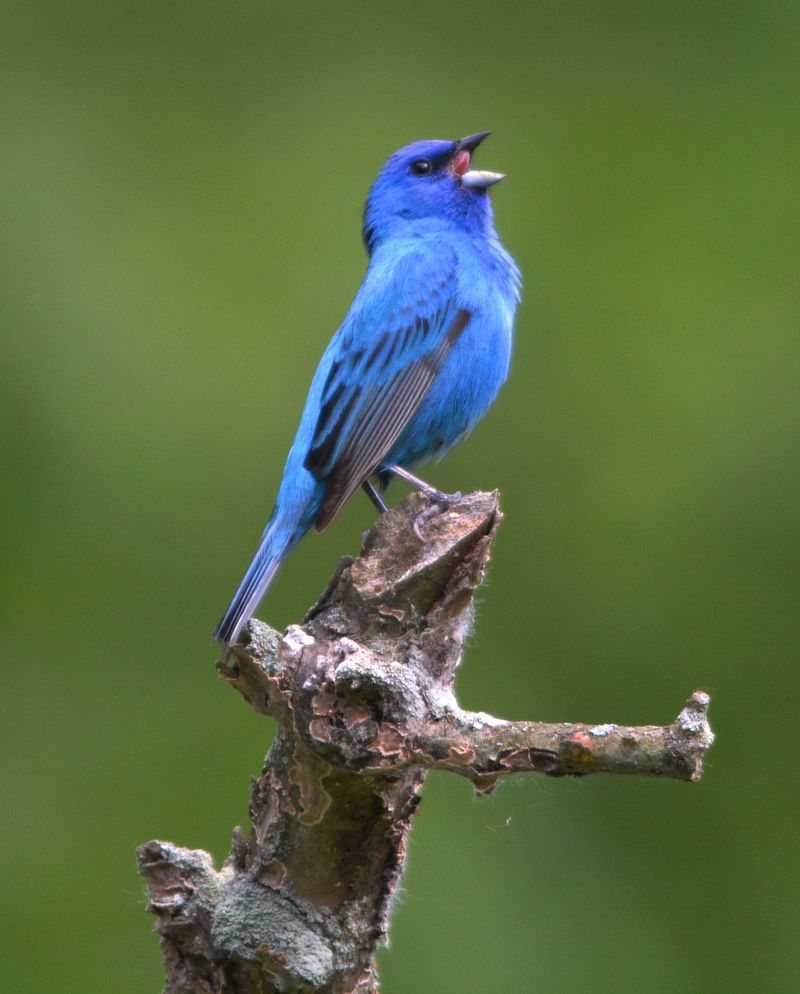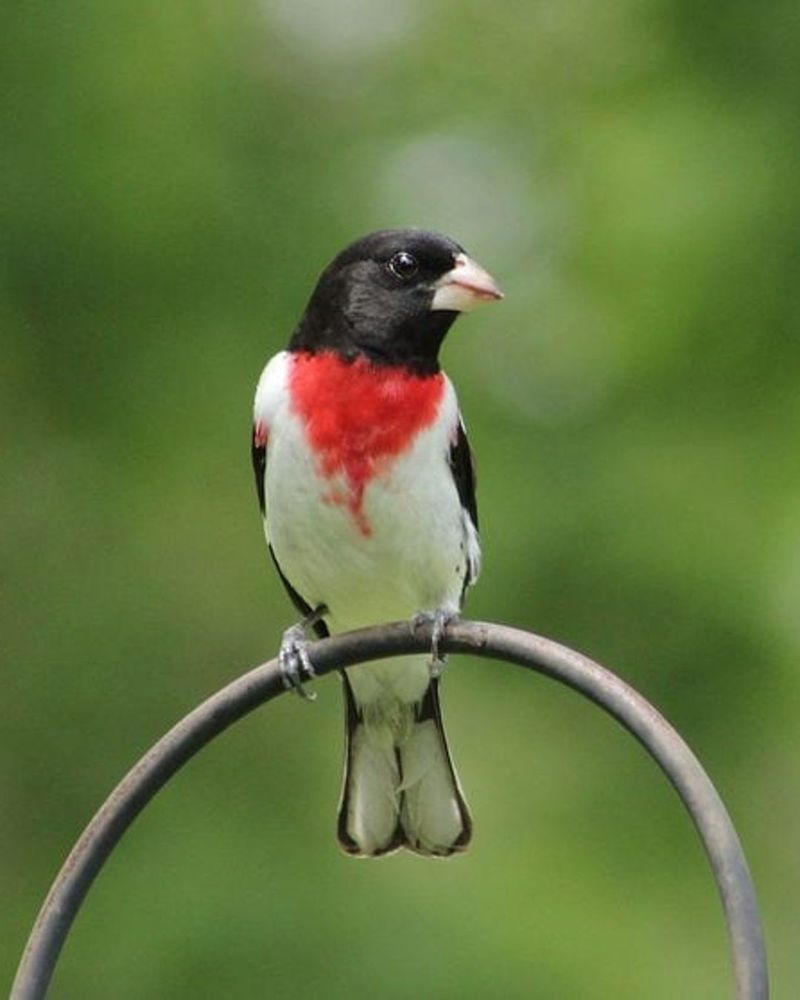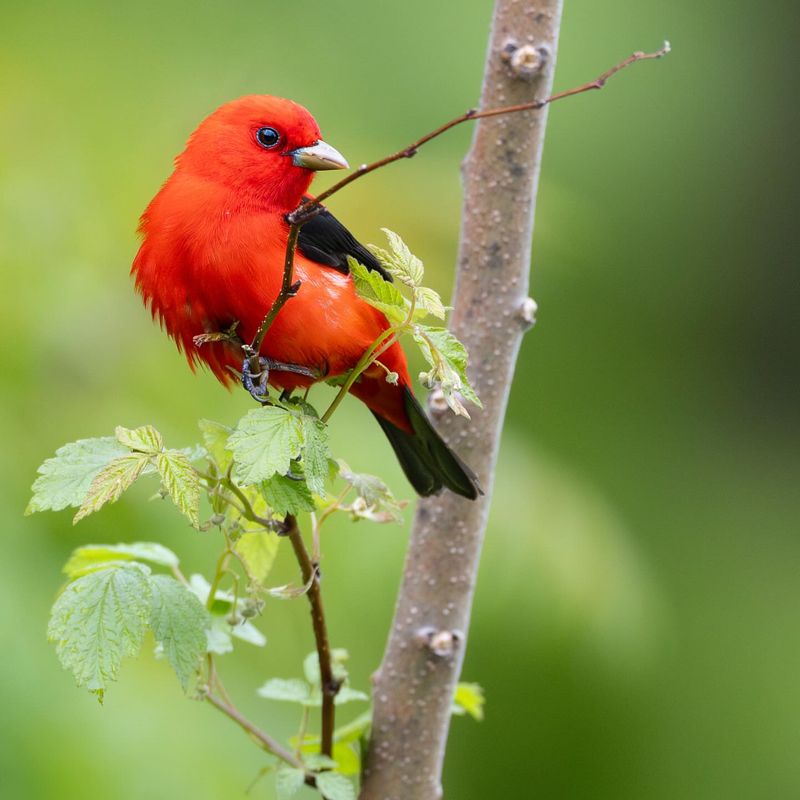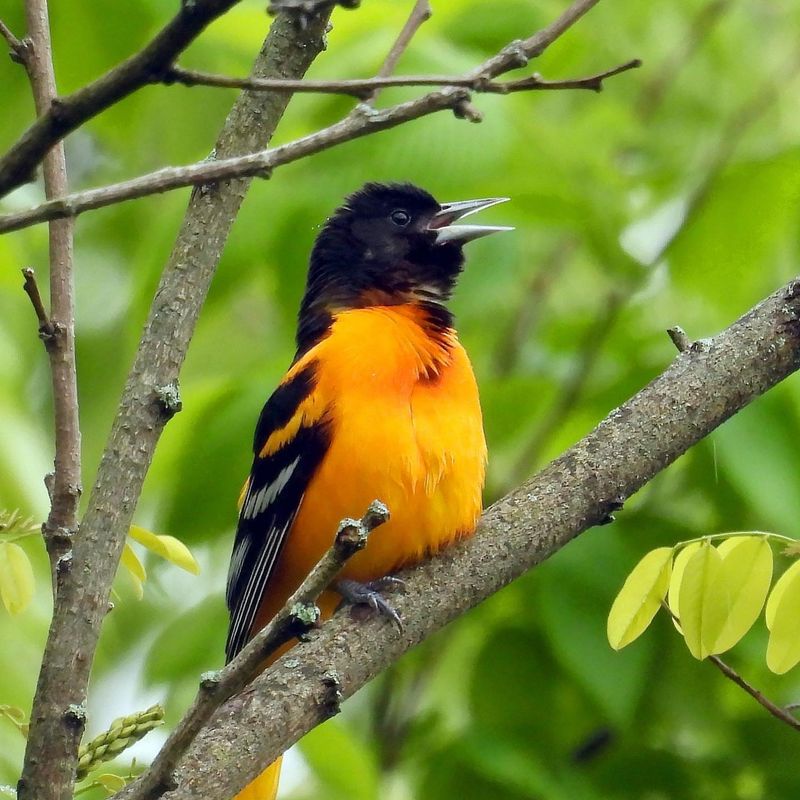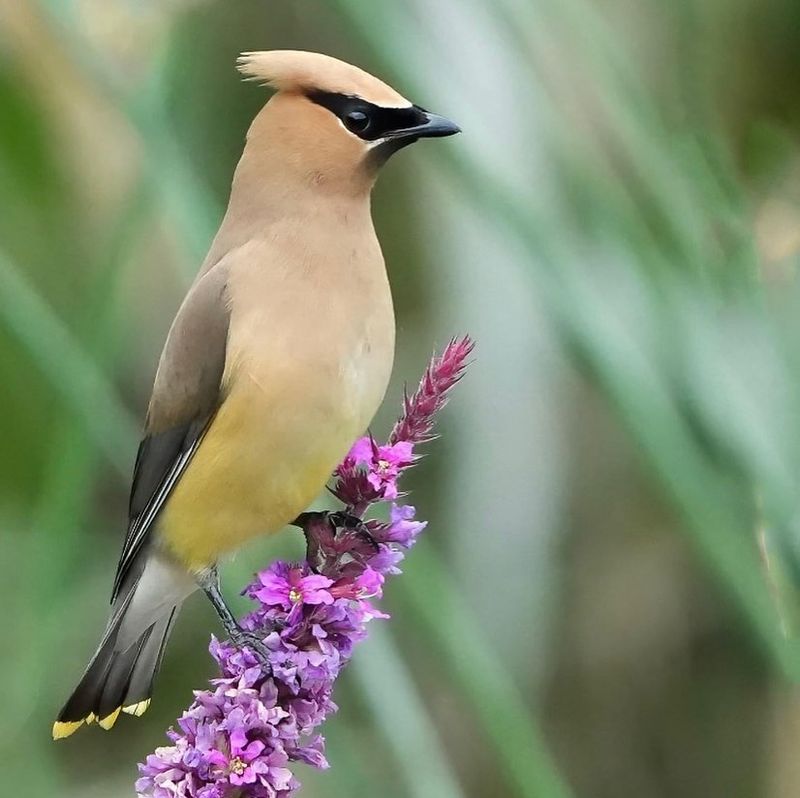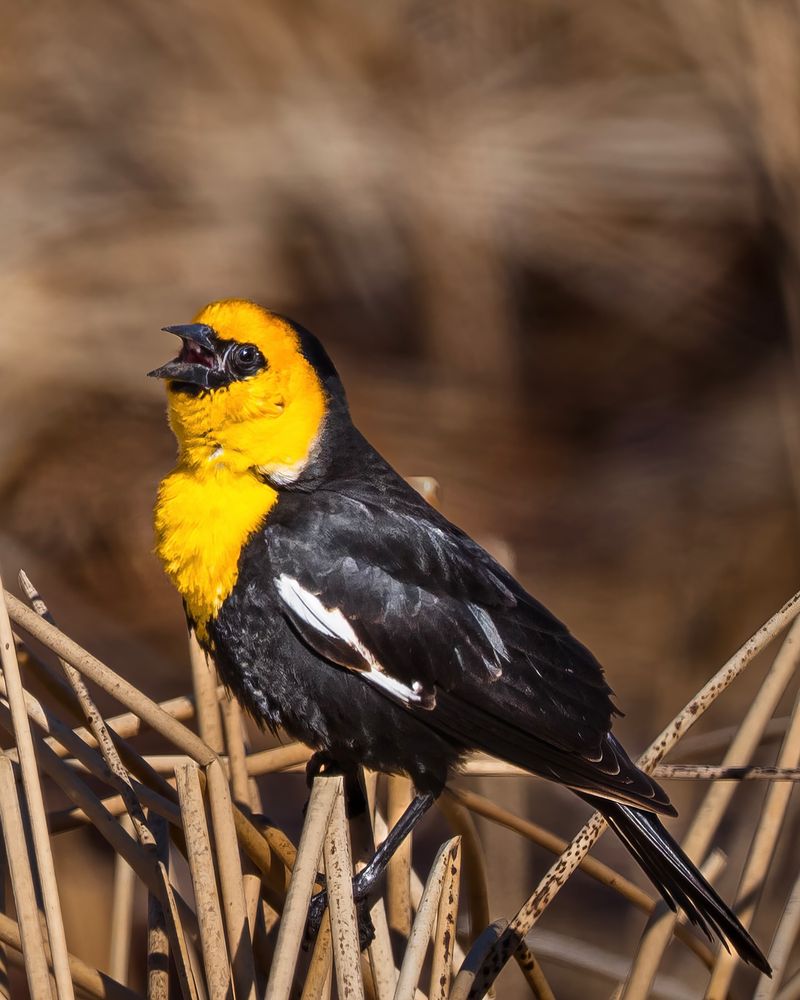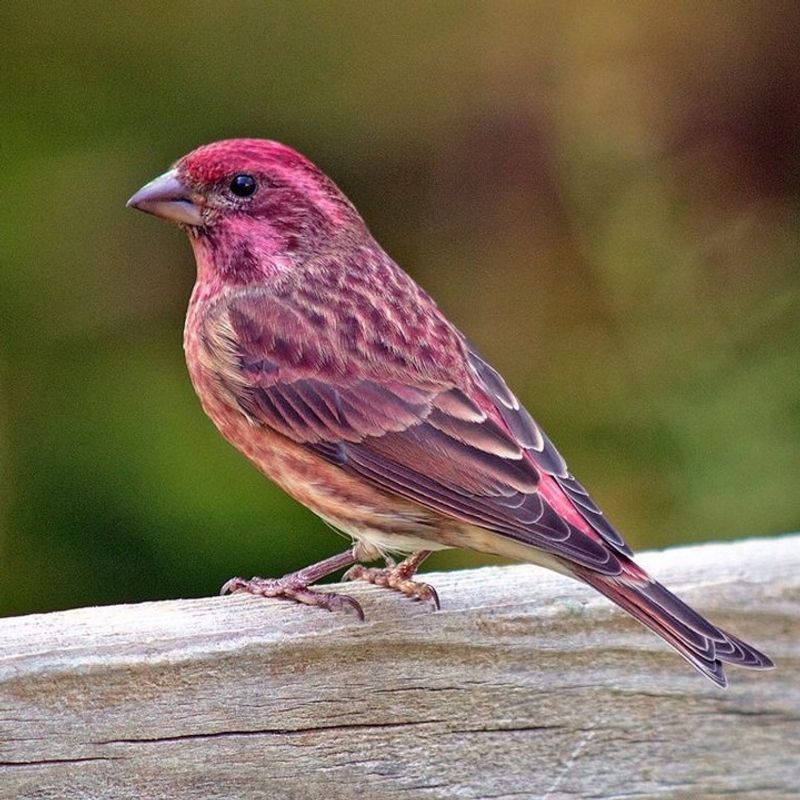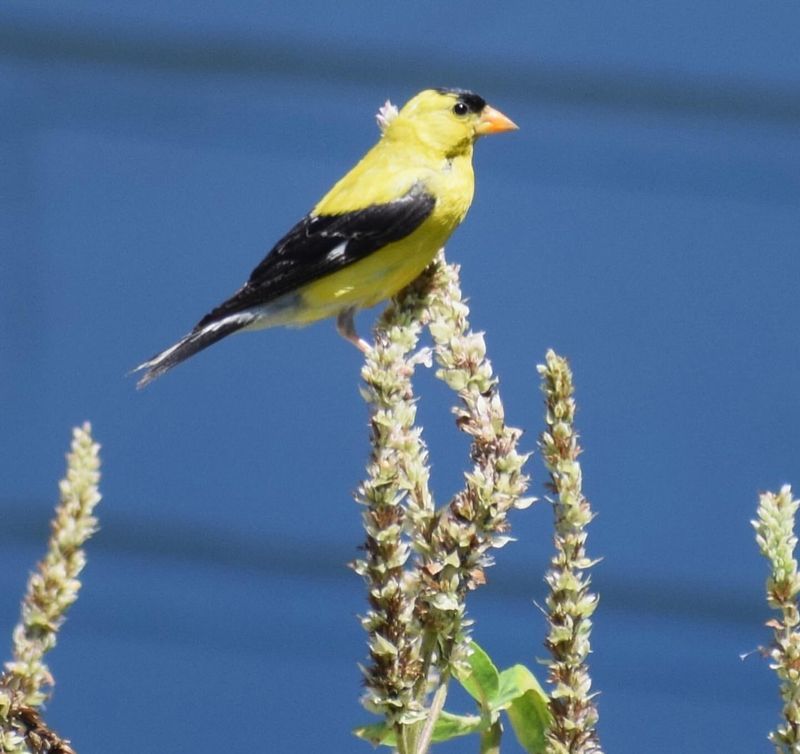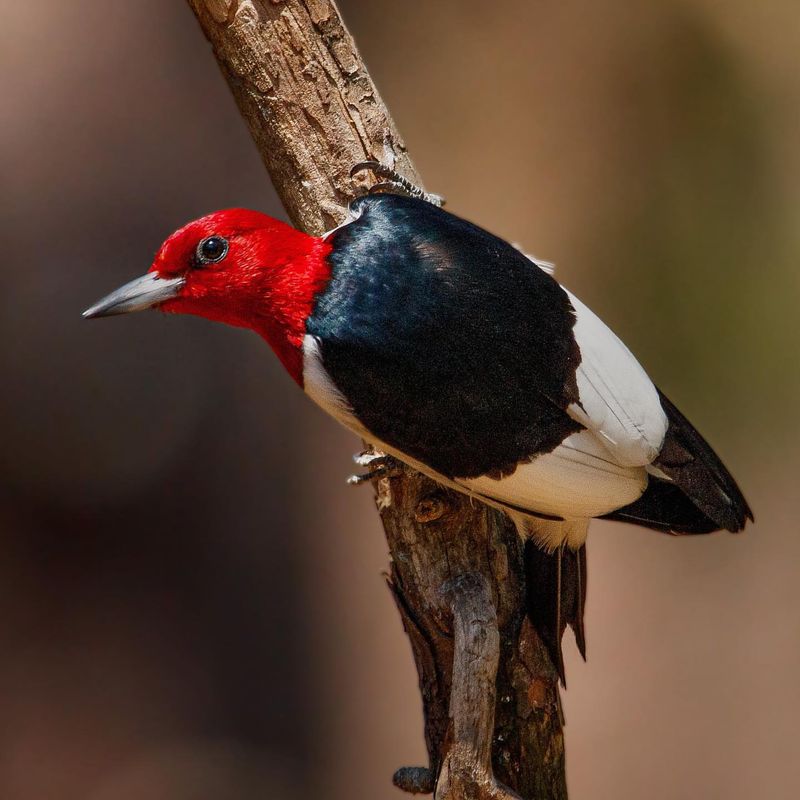North Carolina’s backyards are home to an amazing variety of birds with surprising colors. From brilliant blues to fiery reds, these feathered visitors bring splashes of unexpected color to our gardens and feeders.
Spotting these unusually colored birds can turn an ordinary day into something special as they flit among trees and shrubs.
1. Painted Bunting: Nature’s Rainbow
Male Painted Buntings look like they flew straight out of a child’s coloring book! Their heads glow with brilliant blue, while their bodies showcase a mix of bright red, green, and yellow patches.
Unlike their flashy mates, female Painted Buntings wear a modest yellow-green coat. These colorful visitors typically appear in coastal areas of North Carolina during summer months.
2. Indigo Bunting: The Blue Jewel
Shimmering like a sapphire in sunlight, male Indigo Buntings transform ordinary bird feeders into treasure chests. Their entirely blue bodies seem to change intensity as they move, sometimes appearing almost black in shadows.
Many backyard birdwatchers mistake these beauties for bluebirds at first glance. Listen for their distinctive double-note chirps from treetops during summer breeding season.
3. Rose-breasted Grosbeak: The Tuxedo Bird
Imagine a bird wearing a formal black and white tuxedo with a bright red triangle pinned to its chest! Male Rose-breasted Grosbeaks bring exactly this striking fashion statement to North Carolina feeders during spring migration.
Females lack the red bib but sport a beautiful streaked pattern. Their massive triangular bills crack seeds with impressive power, making them easy to identify at feeders.
4. Scarlet Tanager: The Flame in the Forest
A flash of intense red with jet-black wings might make you think you’re seeing things! The Scarlet Tanager males burn like living flames against green foliage during summer visits to North Carolina.
Despite their eye-catching color, these birds can be surprisingly hard to spot as they prefer hanging out in the forest canopy. Their distinctive chick-burr call often reveals their presence before your eyes can find them.
5. Baltimore Oriole: Orange Flame
Looking like tiny Halloween decorations, Baltimore Orioles flash bright orange and black as they dart through North Carolina treetops. Males sport the most dramatic coloring, with flame-orange underparts contrasting sharply with black heads and wings.
These fruit-lovers are particularly fond of grape jelly and orange halves at feeders. Their distinctive hanging sock-like nests woven from plant fibers are engineering marvels among birds.
6. Cedar Waxwing: Nature’s Watercolor
Sporting a smooth brown-to-yellow gradient that any artist would envy, Cedar Waxwings bring subtle elegance to North Carolina yards. Their most distinctive features include a black mask, yellow-tipped tail, and the waxy red tips on wing feathers that give them their name.
These social birds travel in flocks, often descending on berry-producing trees and shrubs. Their high-pitched whistles announce their arrival as they swoop in to feast.
7. Yellow-headed Blackbird: The Surprise Visitor
Imagine a crow-sized blackbird with a brilliant golden-yellow head and neck! While not common in North Carolina, Yellow-headed Blackbirds occasionally make surprising appearances during migration or winter, especially in western parts of the state.
Their deep, harsh croaking call sounds nothing like their appearance would suggest. When these rare visitors show up at your feeder, grab your camera – they’re definitely worth documenting!
8. Purple Finch: The Raspberry-dipped Bird
Male Purple Finches look as if they’ve been dipped headfirst in raspberry juice! Despite their name, they’re more rosy-red than purple, with the color spreading across their head, breast, and back.
Often confused with the more common House Finch, Purple Finches have a broader, more powerful bill and cleaner coloration. Winter brings these northern breeders to North Carolina feeders, where they favor black oil sunflower seeds.
9. American Goldfinch: The Transforming Canary
Summer brings a spectacular transformation to male American Goldfinches as they molt into brilliant lemon-yellow bodies with contrasting black caps and wings. This dramatic color change makes them look like entirely different birds compared to their dull winter selves.
Females and winter males wear a more subdued olive-brown. Their bouncy flight pattern and sweet, canary-like songs make them easy to identify even from a distance.
10. Red-headed Woodpecker: Nature’s Tricolor
With a head that glows like a stop light, Red-headed Woodpeckers are impossible to miss! Their striking color pattern of solid red head, snow-white body, and blue-black wings and tail creates a patriotic display unlike any other North Carolina bird.
Unlike other woodpeckers that mainly drill for insects, these colorful birds catch bugs in midair and store nuts in tree crevices. Look for them in open woods with dead trees, especially near water.

